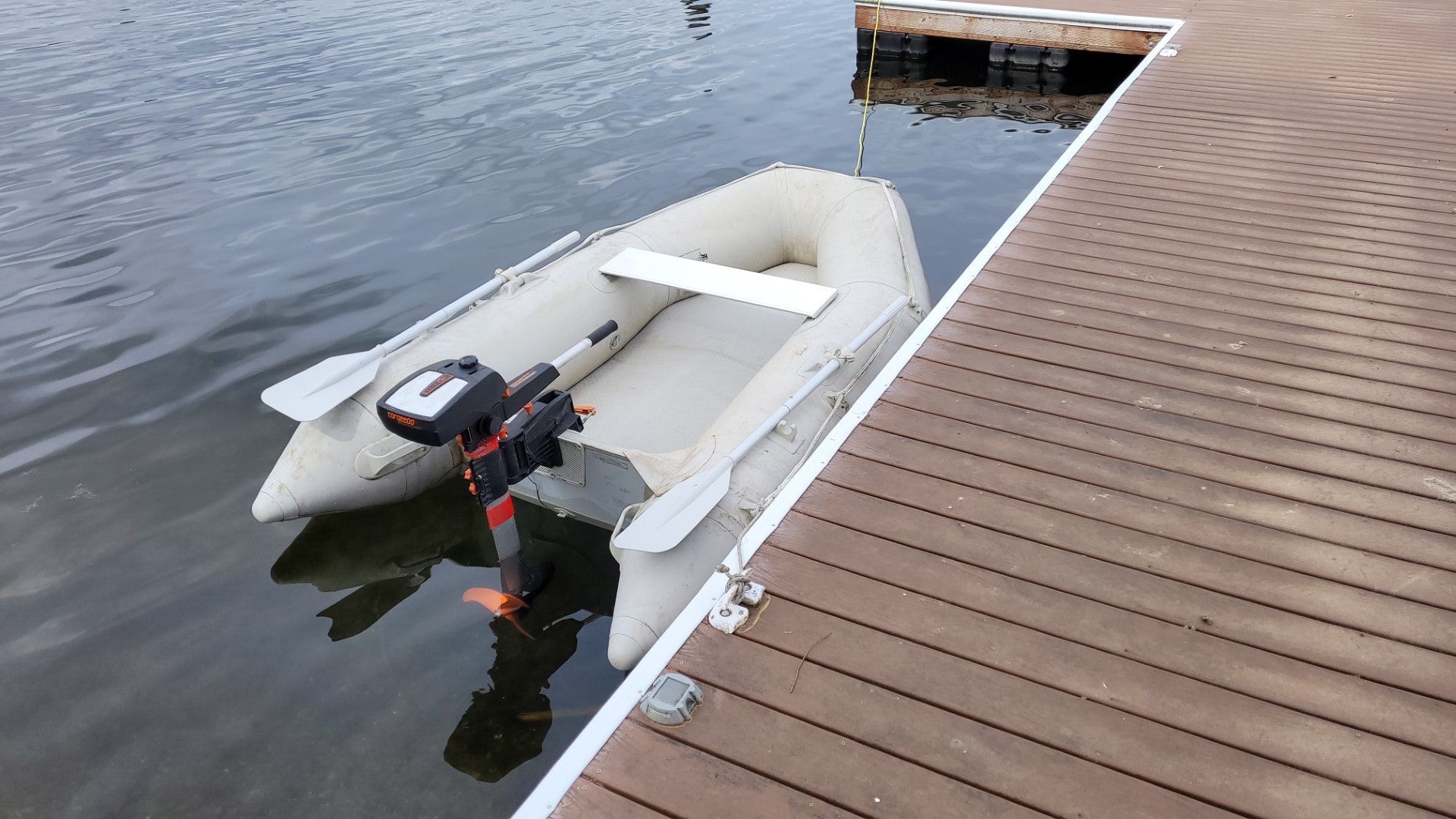
We finally got around to inflating the old Saturn air floor dinghy today and testing the Torqeedo motor…with mixed results.
Saturn dinghy
This Saturn dinghy is an older PVC inflatable boat. I’m guessing it is about 8′ 6″ long. It has three main air chambers plus the air keel and the air floor.
The serial number (VEJ00662C313 ) decodes as follows:
- VEJ = Boatstogo Inc (In Business)
- 00662 = Boat Serial Number
- C3 = Manufactured March 2013
- 13 = Model year 2013
The dinghy appears to be holding air. While using the foot pump to inflate the high-pressure air floor, I noticed a patch, but it seems to be holding.
And while the boat holds air, it lets water in. At the end of the day, I pulled the boat up onto the grass and pulled the transom plug. About two gallons of water came out from under the air floor. Not good.
The boat is pretty grimy after sitting out for quite a while. I’ll use some soap with a brush and hose to give it a good scrubbing on the next warm, dry day. There are some algae and mildew stains that might need more aggressive treatment but as usual, I’ll start with the gentler products and advance to harsher products only where needed.
Torqeedo motor
This is an older Torqeedo electric motor, the 801 Travel model. It has been replaced by newer models and spare batteries for this older motor are hard to find.
I charged battery #1 and battery #2 overnight. Both indicated a full charge when they came off the charger. However, battery #2 was essentially flat when I put it on the boat. It seems to be faulty.
Battery #1 did hold a charge. I got about 10 minutes of usage at a moderate speed before the battery petered out.
The motor cut out on me twice while running at full throttle. That might be caused by a restriction in current flow (old battery?) or some kind of overheating issue. The motor did not feel warm so my guess is the battery.
Conclusions
Dinghy
The dinghy may be serviceable but it is an awfully heavy beast for the two of us. It is so wide that when it is stored upside down on the sailboat cabin it almost completely blocks the forward view from the cockpit. It is difficult to sail when you can’t see!
According to the serial number, the boat was manufactured nine years ago. “PVC inflatable boats will last anywhere between 2-10 years depending on the manufacturer, the use, and care it receives,” says Newport Vessels. Considering that the previous owner left the dinghy on top of the cabin and not shielded from the sun, the boat is probably at end of life.
I’ve decided to go shopping for a new, lighter dinghy for the boat. I can probably use the old dinghy at my sister’s lake place where I can store it out of the direct sun. We can get a few more to perhaps several more years of use out of it before it degrades too far to be usable.
Motor
The motor may not be worth trying to resurrect. The batteries only have about 300 KWh of capacity when new. Clearly, the two batteries are no longer in new condition. At around $600 each to replace them, it might be a better choice to look at a new Spirit 1.0 Plus motor or even a small gas-fueled outboard.















Update… Both batteries fail to hold a charge for more than about 10 minutes. In searching for replacement batteries, I conclude that they are no longer available. Thus, the motor appears to be a boat anchor (i.e., useless). It does work but without good batteries, it is not usable.
I suppose it may be possible to open the battery packs, locate the bad cells, and replace them, but I have not found success stories from folks who have tried that.